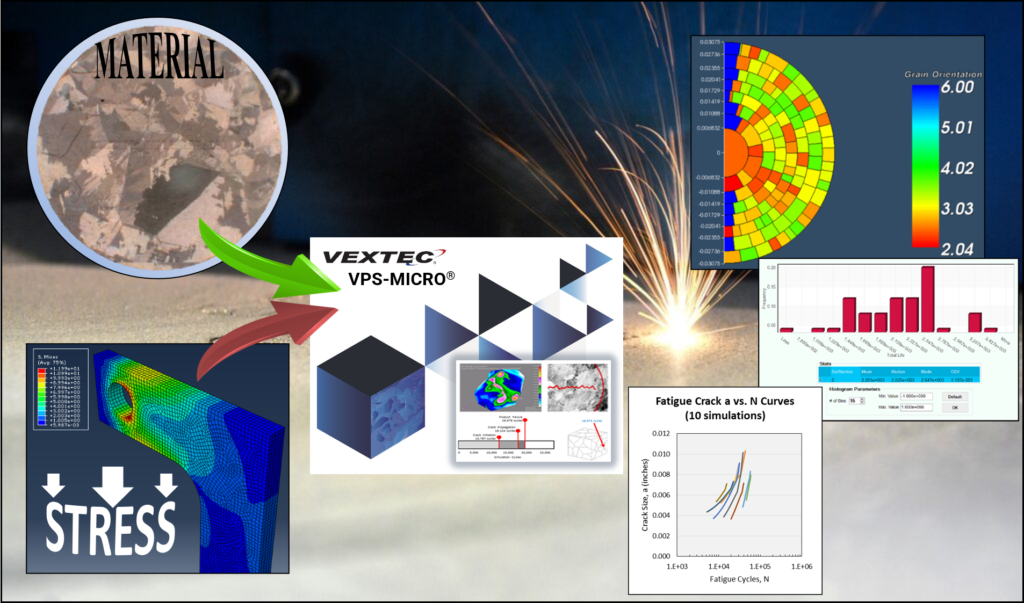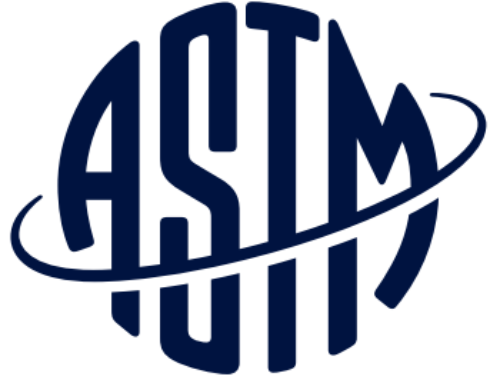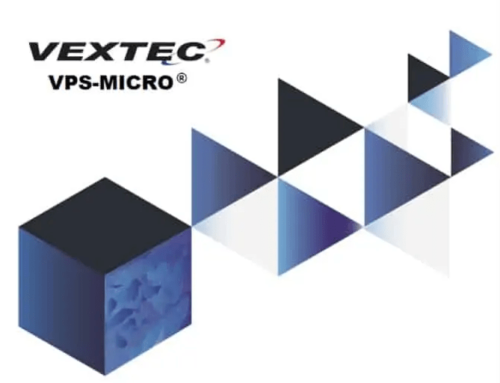Recognizing the need to maintain competitive technological advantage against adversaries, the U.S. Department of Defense (DOD) has been organizing a strategy to implement additive manufacturing (AM) – also known as 3D printing – across its vast enterprise.
Though AM technologies are varied in their materials and methods, they can be generally described as computer-controlled processes which create three dimensional parts on a layer-by-layer basis. AM’s benefits include the ability to make parts with innovative designs that are lighter and perform more efficiently than parts manufactured by traditional methods like forging, milling, welding and casting. The cost of AM is decreasing continuously, in inverse proportion to its increasing technological maturation. As such, the DOD has been using AM to produce spare parts for aircraft and weapon systems, tools, R&D, and medical supplies like face shields to meet the recent needs of the COVID-19 pandemic.
Here, we will be taking a look at the specific goals that the DOD has for AM – specifically, metal AM – and what we at VEXTEC are doing to help the DOD achieve each of these goals. You can jump to a specific section by using the links below.
DOD Overview
Qualification and Certification
The Role of Modeling and Simulation
Integrating in the DOD AM Digital Thread
Summary
_________________________________
DOD Overview
Over the past decade, individual branches of the military, the Defense Logistics Agency, and field commands have been employing AM to varying degrees. But the recent push within the DOD has been on alignment of broad AM activities at the highest levels to facilitate information exchange, develop best practices, and advance the technology forward. To meet this goal, the DOD published the Department of Defense Additive Manufacturing Strategy document in January 2021. This strategy document sets a common vision for AM and details five strategic goals for implementing the technology:
1. Integrate AM into DOD and the defense industrial base.
2. Align AM activities across DOD and external partners.
3. Advance and promote agile use of AM.
4. Expand proficiency in AM: learn, practice and share knowledge.
5. Secure the AM workflow.
To complement the strategy document, DOD Instruction 5000.93 was published in June 2021. Entitled “Use of Additive Manufacturing in the DOD”, the instruction establishes overall AM policy, roles and responsibilities across the DOD, and provides overarching AM guidance. To further enhance the strategy, military services and the Office of the Secretary of Defense (OSD) Manufacturing Technology (ManTech) program are collaborating with others in the DOD to develop specific AM plans and detailed technical guidance. The Joint Additive Manufacturing Working Group (JAMWG) comprises representatives of the military services as well as other AM-critical defense agencies within the U.S. Government. An AM Guidebook is slated to be released in 2022, which will be a product of a DOD-formed joint steering committee that has convened this year.
So, what does this all mean for companies interested in AM technology? As the largest buyer of goods and services in the world, the DOD has enormous influence when it comes to the advancement of new technologies. The fact that AM has been targeted by the DOD as a necessary tool to meet current and future needs helps ensure the viability of AM for decades to come. But the devil is always in the details. Overarching guidance documents and broad goals cannot — by themselves — build a certified flight-critical component that will be used in sustainment activities for an aging B-52 bomber fleet, for example. Innovative applications of AM and its supporting technologies will need to be developed in order to meet these ambitious goals.
The DOD is aware that they will not be able to “go it alone” when it comes to AM; they will need the help of industry as well as academia. The America Makes consortium, established in 2012 by the National Center for Defense Manufacturing and Machining (NCDMM), represents one of the more prominent cross-disciplinary collaborative engagements. VEXTEC, provider of AM performance prediction software VPS-MICRO®, is a proud Silver Member of America Makes. As VEXTEC has been collaborating with DOD agencies for many years, it was a natural fit to continue this effort within America Makes. Our software and technical services have helped, and continue to help, the DOD adopt and advance AM technology.
________________________________
Qualification and Certification
One of the main purposes for the Department of Defense (DOD) to issue their strategy document is to address their primary need for “rapid and standardized approaches for qualification of materials and process, and certification of AM parts.”
It is well-known that one of the biggest potential benefits of AM is the ability to rapidly prototype/build necessary items, and the U.S. Military sees this as having a streamlining effect on their supply chain. In an ideal world, raw printing materials (e.g., feedstock powder for metal AM) can be shipped more economically than completed parts to forward operating locations (termed “field” or “afloat” depending on if they are by land or by sea). Computer Aided Design (CAD) files of necessary parts can be securely transmitted to the proper AM machines, and technicians can assist on the ground as the parts are built. The strategy document provides current examples of the Marine Corps field-printing sensor housings to secure a perimeter gap around a base; the Army printing a low-cost cap to protect a “million-dollar lens” on a tank; the Air Force replacing obsolete parts on the C-5 aircraft at 5% of the original cost.
However, it is not enough to simply be able to rapidly produce “one-off” replacement parts or nonstructural components; these alone cannot justify full investment in AM by the Military Services. The technology needs to be robust enough, and consistent enough, to build structurally-critical components at a repeatable and reliable rate for increased confidence and minimized risk. Field repair units, their designers and technicians, need to know that the AM parts they are replacing in their equipment are functionally equivalent or superior to the legacy/obsolete parts they are removing. If they are not, they need to know the quantified risk that is involved in the replacement. In either case, this is where rapid and standardized approaches for qualification and certification are necessary tools. This is distilled in the DOD strategy document’s Goal 3 – Advance and Promote Agile Use of AM:
3.1 Develop and share new approaches to certification and qualification
3.2 Advance technology to inform design
3.3 Support forward deployment and application of AM in the field
The DOD instruction document assigns the responsibility of facilitating “consistency in AM qualification and certification methodologies across the Military” to the Under Secretary of Defense for Research and Engineering, the USD(R&E). Also, the Secretaries of the Military Departments and Directors of the Defense Agencies and DOD Field Activities with AM requirements are tasked with providing “oversight to ensure that AM parts comply with organization-level processes and that cognizant authorities complete the appropriate level of qualification, certification, and risk evaluation” and directing “use of consistent qualification and certification criteria and methodologies ensuring that approval authorities take a disciplined risk management approach that provides rapid and competent support to speed up AM efforts across the DOD.” These assignments of responsibilities, and the flow-down of tasks to subordinate levels in the Military, will assist in the adoption of AM.
The strategy document also recognizes that, to achieve the Goal 3, “qualification and certification is a key gap and [an] opportunity for collaboration” between the DOD and the broader AM community. To facilitate this collaboration, the DOD has pledged to engage in technical interchanges with industry and academia with the objective of increasing knowledge.
VEXTEC’s predictive performance software VPS-MICRO aids the current certification process, by allowing engineers the ability to use AM materials and process data to virtually test AM parts. Commercially-available AM machines and in-process monitoring methods can deliver data about what is happening layer-by-layer to create a 3D model of local material properties. VPS-MICRO integrates this data with structural modeling (CAD/Finite Element Analysis [FEA]), simulating what would happen if the component was tested in fatigue. Physical testing would only occur after simulations show there is high confidence that the component would pass this testing. This reduces the number of redesigns and repeat tests, which are one of the largest drains on time, equipment, and man-hour resources during the qualification and certification process.

VEXTEC has been working with the U.S. Air Force and its Rapid Sustainment office (RSO) to develop AM qualification and certification methods with VPS-MICRO as a core element. The fruits of these collaborations have led to delivery and training of VPS-MICRO to engineers at the propulsion sustainment group at Tinker Air Force Base in Oklahoma City, OK, who are looking to select critical aircraft components for AM replacement.
________________________________
The Role of Modeling & Simulation
The DOD has prioritized the implementation of advanced technologies in the deployment of additive manufacturing. These technologies include artificial intelligence, machine learning, and a particular emphasis on modeling and simulation. According to the strategy document, “the Services are currently evaluating Modeling and Simulation (M&S) tools to increase confidence that [printed] structurally-significant metallic parts are reliable and cost effective.” This speaks to the gap that needs to be overcome in the adoption of metal AM by the DOD. Prior uses of metal AM have been limited in scope (rapid prototyping, “one-off” nonstructural components, tooling, etc.). As the military shifts its focus to the ability to print structurally-significant parts, an effective toolset must be developed that leverages M&S capabilities.
VEXTEC’s commercially-available VPS-MICRO simulation software is based in Integrated Computational Materials Engineering (ICME). The software predicts fatigue performance of a component by simulating the cumulative fatigue damage accumulation process across multiple length scales (crack nucleation, small flaw fracture mechanics, and linear elastic fracture mechanics), using mechanistic fatigue damage models. These models use process-structure-property relationships to create input distributions of material parameters. For example: a laser powder bed fusion (L-PBF) process to build a certain component geometry with Ti-6Al-4V metal powder will yield certain microstructural characteristics (grains, lack-of-fusion welds, voids, etc.). These characteristics, along with other material parameters, are modeled by VEXTEC as statistical distributions that are then sampled from during component fatigue simulation.
VPS-MICRO is a standalone, Windows-based predictive software. However, it can easily link to other standard M&S tools that design engineers frequently utilize. Finite element analysis (FEA) packages such as ANSYS and Simulia/Abaqus create structural modeling and simulation results for a given component geometry. In fact, VEXTEC maintains developer partnerships with these and other M&S suppliers to ensure interoperability. The high-fidelity distribution of surface area and internal stresses from these structural models can be imported into VPS-MICRO. Specific AM processing characteristics can be modeled in VPS-MICRO as well, including:
• Surface roughness (AM as-built surfaces)
• Residual stress (effects of post-build heat treatment – or lack thereof)
• AM surface layer property differentiation
Integrating all of these modeling capabilities into VPS-MICRO has allowed the software to become a powerful tool for simulated testing of AM components. Rather than the time-consuming process of building/testing of every conceivable AM machine parameter combination, VEXTEC can shorten the design loop by directing engineers to specific component geometry/process/material options that are most likely to pass qualification testing. The following figure provides a snapshot of how VPS-MICRO uses material and structural modeling to simulate fatigue damage in AM components.

The DOD, as part of its AM strategy, recognizes that employing modeling & simulation techniques “will improve development and production of new [AM] capabilities more effectively.” VEXTEC’s VPS-MICRO simulation software has successfully demonstrated its value in recent AM-specific Small Business Innovative Research (SBIR) programs with DOD agencies.
_________________________________
Integrating in the DOD AM Digital Thread
The management of additive manufacturing technologies, data, and other digital information is another important pillar of the DOD AM strategy. The collection and security of all information relating to AM is called the digital thread, and it is a top-of-mind concern for all government and industrial partners involved in AM.
The modern nature of additive manufacturing (using computer files to build components) makes the end-to-end process much different from conventional manufacturing techniques. For example, it is much more laborious to implement casting and forging manufacturing processes, since they involve many more physical steps as opposed to AM. The development of an AM digital thread must have the overarching goal for the resulting system to be simultaneously interoperable as well as secure. To quote the strategy document, “The digital thread…enables the Warfighter by giving tactical units secure access to approved data; a way to share innovative solutions; and the ability to submit ideas back to engineering centers and life cycle managers.” Securing and sustaining the AM digital workflow is a key long-term step for the DOD Services as well as the Office of Secretary of Defense (OSD).
VEXTEC has built VPS-MICRO with these goals in mind. The computational workflow of the software, shown below, uses all-digital data inputs (finite element analysis [FEA] files; material characterization and testing data; component surface residual stress and roughness measurements; etc.) and provides simulation outputs digitally as well.

Among its many customizable features, the software features:
• Permissions-based material modeling parameter access: only approved users in the client’s userbase can modify AM material model input data.
• License key flexibility: VEXTEC can issue node-locked licenses in sensitive areas (software would only work on particular machines – they do not have to be networked together), or floating server-level licenses that can be checked-out (by approved members of the client’s userbase).
VPS-MICRO’s interoperability is demonstrated on both the software’s inputs and outputs. On the input side, tailored plug-in scripts are used to collect FEA stress and geometry information from structural models in ANSYS, Abaqus, Nastran and other commercially-available packages; and Microsoft Excel can be used to assist the material model development process (tabular input of mechanical testing data and other input parameters). VPS-MICRO’s simulation outputs can be exported back to Excel for further post-processing and analysis. These features help support DOD’s goal to “promote sharing of AM part life and performance data with original equipment manufacturers to support lifecycle analysis to further improve reliability and sustainability.”
A critical component of the AM digital thread for DOD is the Technical Data Package (TDP), which represents the sum total of “information that define the physical and functional characteristics of a configuration item and its subordinate assemblies, subassemblies, and parts.” A portion of a given item’s TDP is the engineering design data. The more this data can be digitized and secured, the easier it is to maintain, share, sustain, and modify the item if necessary. For AM to be successful to the DOD, its engineering design datasets, workflows, and software must be sufficiently integrated so that designers at a repair depot can effectively transmit build instructions to a forward base that has the proper machines, raw material feedstock, and trained technicians, and there is confidence that reliable parts can be manufactured in the field. VPS-MICRO software has been developed to become a part of this digital thread ecosystem.
_________________________________
Summary
The Department of Defense has developed an aggressive strategy for integrating metal additive manufacturing into its present and its future. Using modeling and simulation technologies to serve critical AM qualification and certification operations, all within a secure environment, is a bold but achievable goal. We at VEXTEC look forward to continuing our partnership with the DOD, through our VPS-MICRO software and services, to fully capture the potential of metal AM and to make it a truly integrated and validated technology for the Military Services.





Leave A Comment